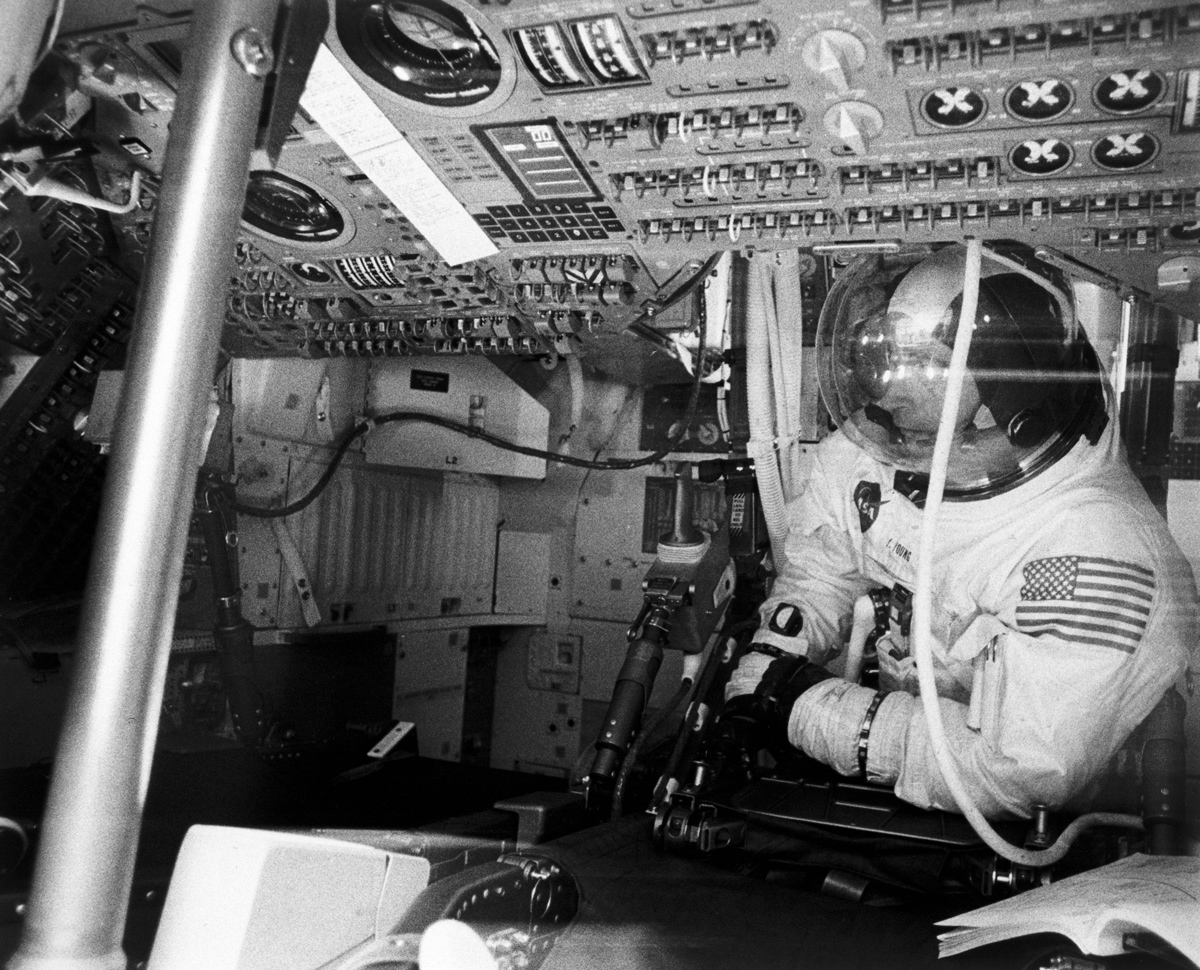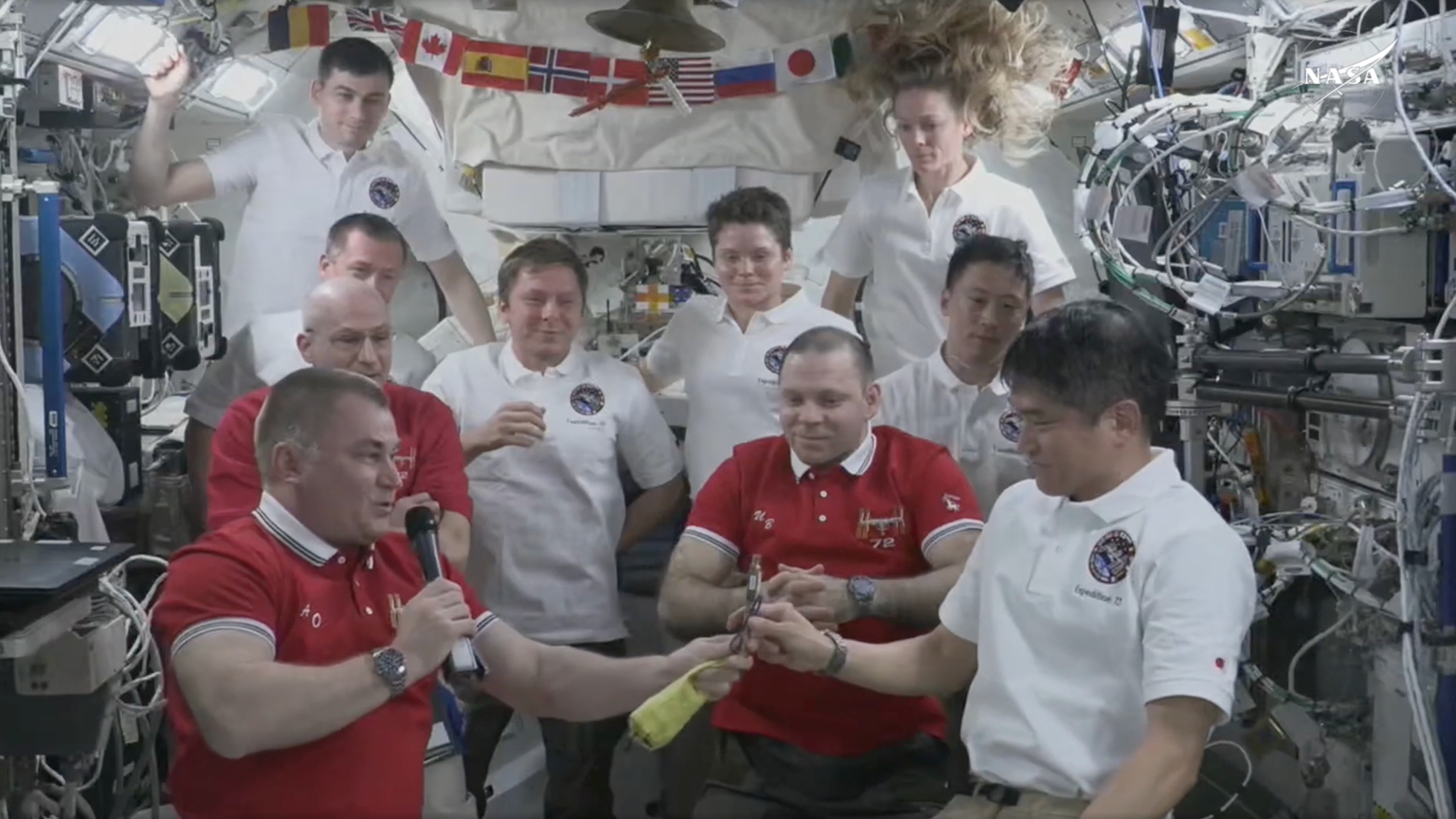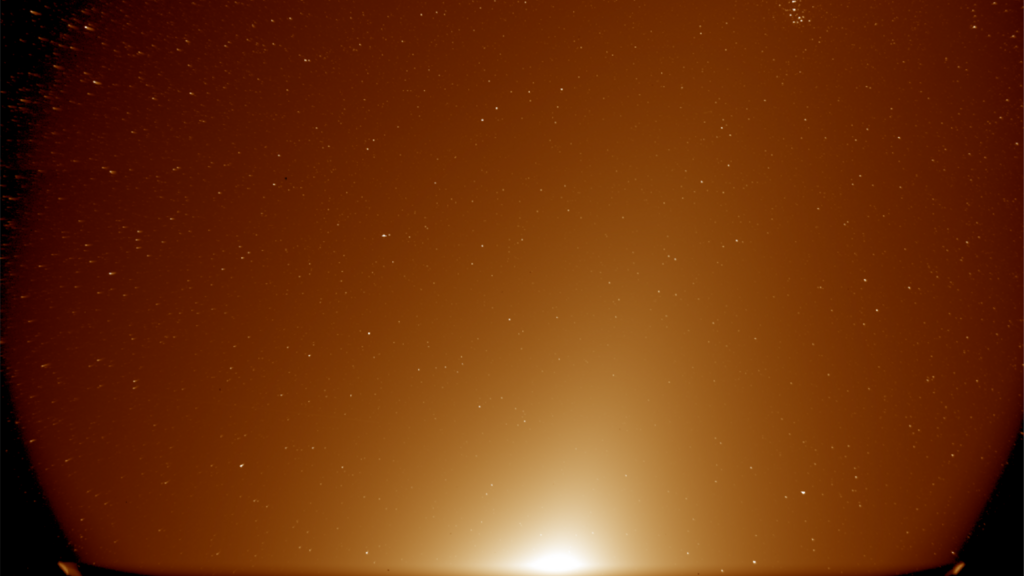The Apollo 10 Mission: NASA's Lunar Landing Dress Rehearsal in Photos
Lunar Mission Training

In April 1969, astronauts Thomas P. Stafford, commander, and, in the foreground, Eugene A. Cernan, lunar module pilot, practice for the upcoming lunar orbit mission in a training exercise at the Kennedy Space Center inside the Lunar Module Mission Simulator.
Ready All Personnel

During a May 13, 1969 Countdown Demonstration, team members and technicians work from inside Firing Room 3 of the Launch Control Center for Launch Complex 39. The Apollo 10 lunar orbit mission with its prime crew of astronauts Thomas P. Stafford, commander; John W. Young, command module pilot; and Eugene A. Cernan, lunar module pilot, will launch from Pad 39B at Kennedy Space Center.
Connecting the the Ship

On the first day of the Apollo 10 lunar orbit mission on May 18, 1969, personnel at the flight director's console at Mission Control in Building 30 are alert and aware. Flight directors, from left, Gerald D. Griffin and Glynn S. Lunny for shift one, sit at the desk and Milton L. Windler for shift two, stands behind. In the background MSC Director of Flight Operations, Dr. Christopher C. Kraft, Jr., stands.
Practice for Success

During an April 3, 1969 simulation, astronaut John W. Young, Apollo 10 prime crew command module pilot, trains in the Apollo Mission Simulator at Kennedy Space Center.
Tight Spaces

On January 15, 1968, the prime crew for the Apollo 10 lunar orbital mission, participates in a simulation inside the Command Module Simulator. Astronaut John W. Young, command module pilot, is seen here in the training in Building 5.
Lunar Seas and Craters

Apollo 10 imaged crater Schmidt during its lunar orbital mission. Schmidt lies at the western edge of the Sea of Tranquility and is 7 miles in diameter.
A Tight Image

Obscured by the Command Module's control panel window and partially covered by the reflection of the astronaut's suit, the Apollo 10 Lunar Module floats in space. The image was snapped during the astronauts' inspection of the Lunar Module from the Command and Service Module.
Get the Space.com Newsletter
Breaking space news, the latest updates on rocket launches, skywatching events and more!
Goodbye, Earth

On its journey toward the moon, the Apollo 10 spacecraft's prime crew — astronauts Thomas P. Stafford, commander; John W. Young, command module pilot; and Eugene E. Cernan, lunar module pilot — viewed this incredible scene from the spacecraft. The Yucatan Peninsula is under cloud cover and a majority of Mexico up to the Isthmus of Tehuantepec is clear. The Gulf of California, Baja California, the San Joaquin Valley, the Rio Grande River delta and the Texas coast are visible as well. A distinct line separates notable color differences at the 100 degrees meridian.
Well, Hello There

The third television transmission was made by the color television camera on the Apollo 10 spacecraft as the crew made their way to the moon. This image of astronaut John W. Young, Apollo 10 command module pilot, was made from that transmission.
A Gorgeous Evening to Land

On May 26, 1969, the Apollo 10 spacecraft reentered Earth's atmosphere bringing with it astronauts Thomas P. Stafford, John W. Young and Eugene A. Cernan. Splashdown happened in the South Pacific after a successful eight-day lunar orbit mission and the crew and vessel were recovered by the USS Princeton.
Join our Space Forums to keep talking space on the latest missions, night sky and more! And if you have a news tip, correction or comment, let us know at: community@space.com.

Christine Lunsford joined the Space.com team in 2010 as a freelance producer and later became a contributing writer, covering astrophotography images, astronomy photos and amazing space galleries and more. During her more than 10 years with Space.com, oversaw the site's monthly skywatching updates and produced overnight features and stories on the latest space discoveries. She enjoys learning about subjects of all kinds.









